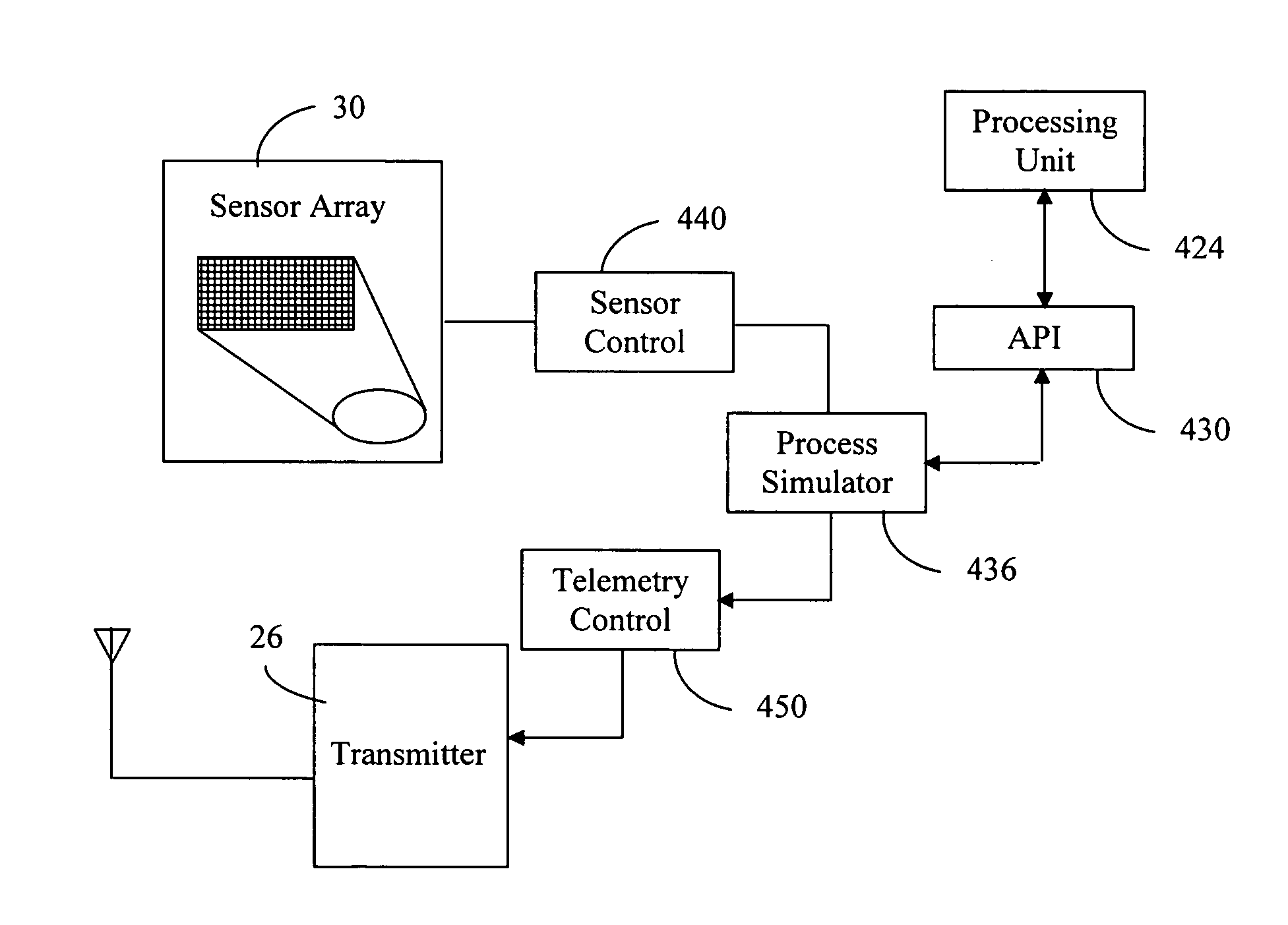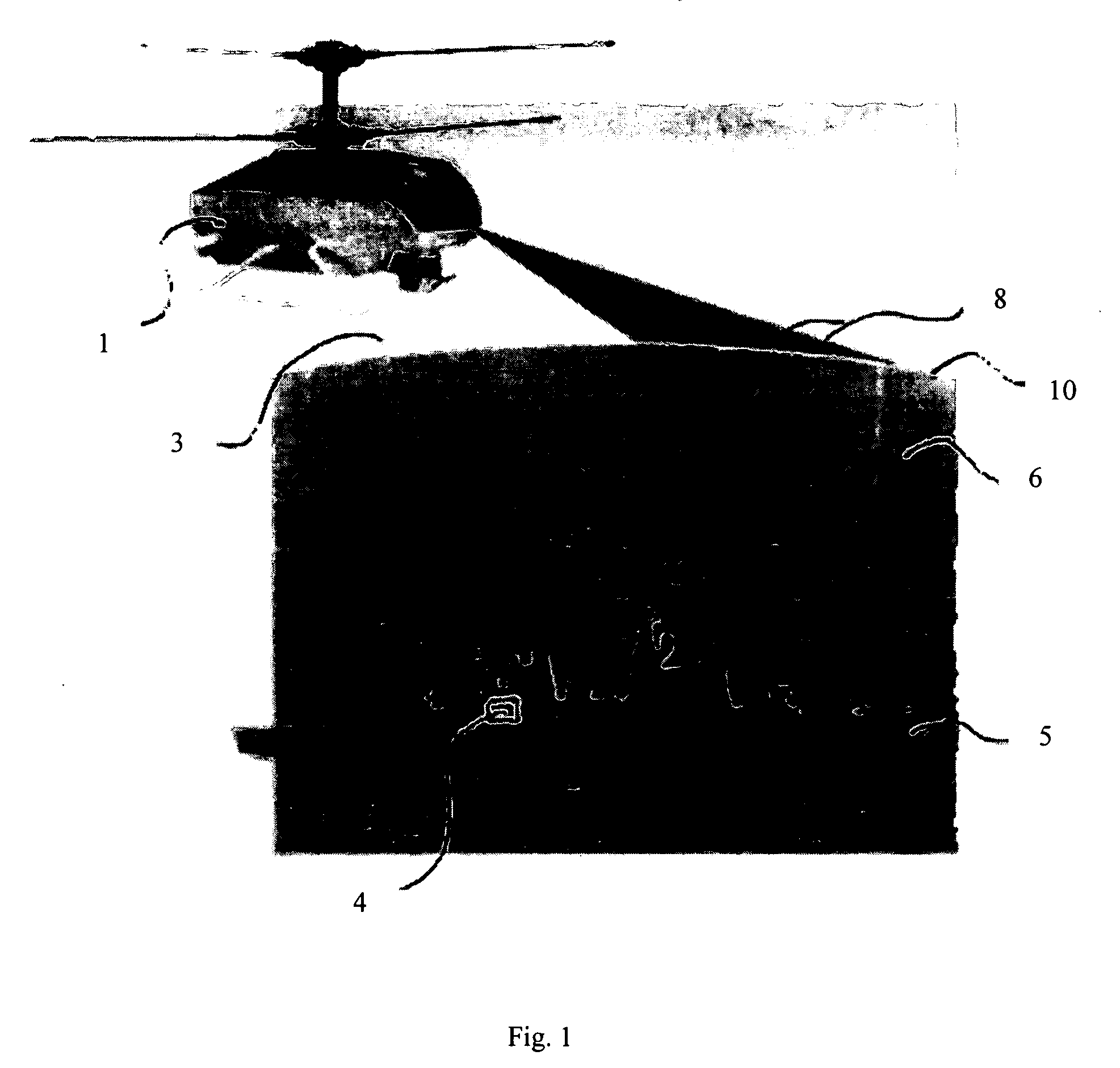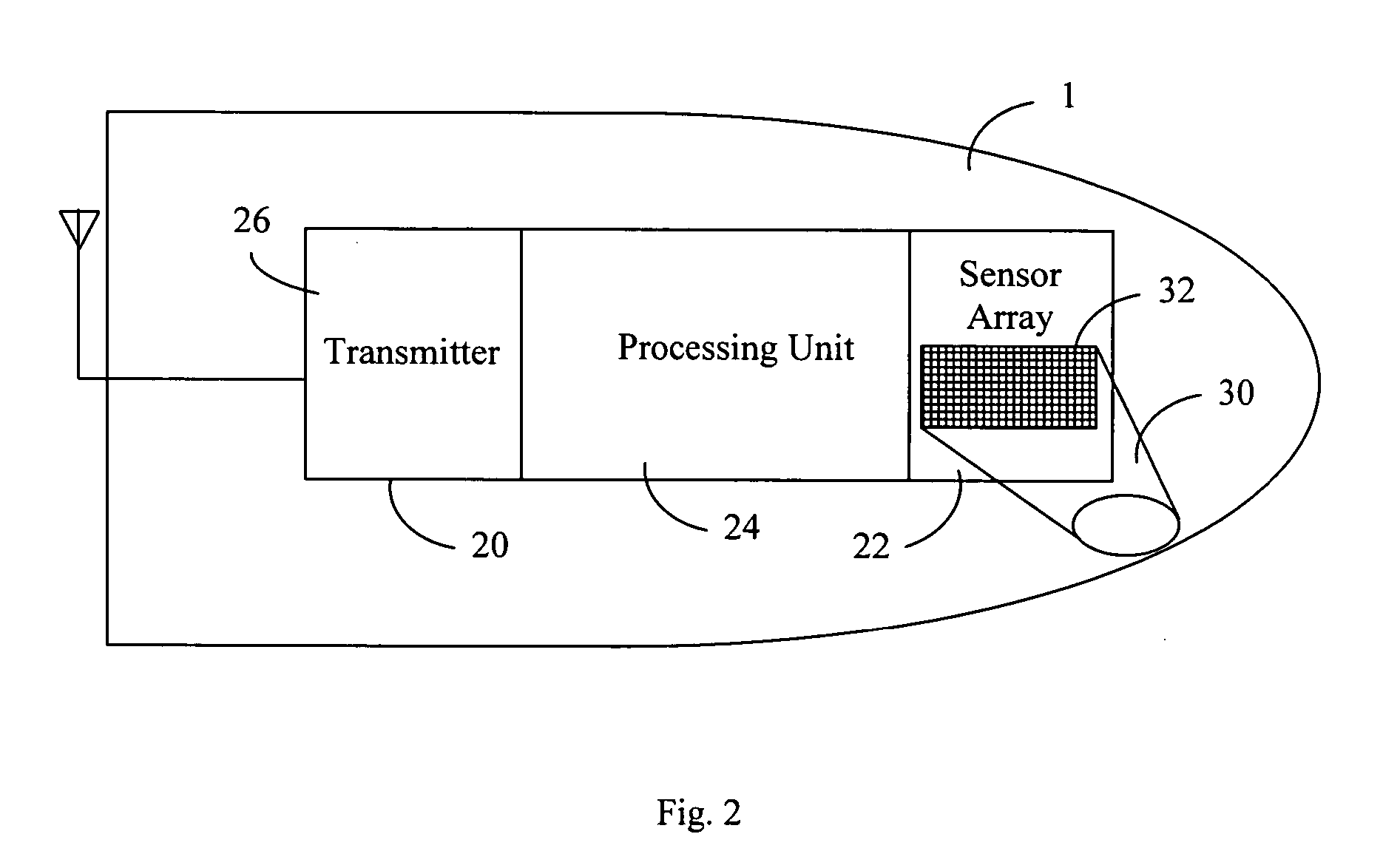Efficient processing in an auto-adaptive network
a technology of automatic adaptation and processing, applied in the field of machine learning, can solve the problems of physical limitations, heavy losses, and decrease the ability of the system, and achieve the effect of simple processing hardware and convenient us
- Summary
- Abstract
- Description
- Claims
- Application Information
AI Technical Summary
Benefits of technology
Problems solved by technology
Method used
Image
Examples
Embodiment Construction
[0030] Embodiments of the present invention provide for operation referred to as adaptive processing. Auto-adaptive processing is not a recognized term of art, but is descriptive of processing of data, often condition-responsive data received from an array of sensors received in successive time slices, in order to update adaptive functions and to calculate imputed values of data for use in evaluating data and which may also be used to predict data. Time slices may also be referred to by such terms as clock periods, time trials or data cycles. For each time slice, measurement values and measurement plausibility values are supplied to the system, and a learning weight is either supplied to or generated by the system.
[0031] Auto-adaptive processing operations may include converting measurement values to feature values; converting measurement plausibility values to feature viability values; using each viability value to determine missing value status of each feature value; using non-mi...
PUM
 Login to View More
Login to View More Abstract
Description
Claims
Application Information
 Login to View More
Login to View More - R&D
- Intellectual Property
- Life Sciences
- Materials
- Tech Scout
- Unparalleled Data Quality
- Higher Quality Content
- 60% Fewer Hallucinations
Browse by: Latest US Patents, China's latest patents, Technical Efficacy Thesaurus, Application Domain, Technology Topic, Popular Technical Reports.
© 2025 PatSnap. All rights reserved.Legal|Privacy policy|Modern Slavery Act Transparency Statement|Sitemap|About US| Contact US: help@patsnap.com



